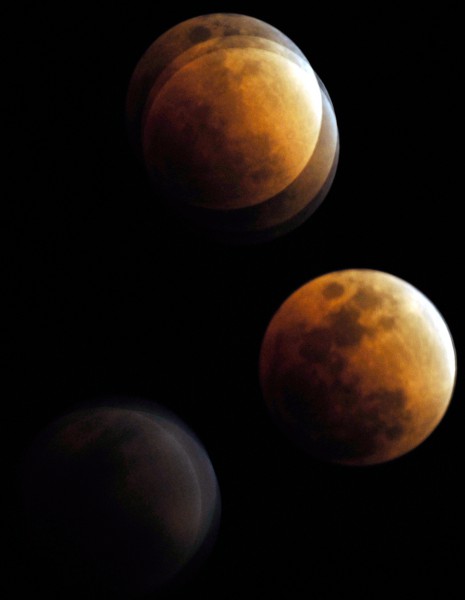
I’m disappointed in you, dear friends. I expect to be kept aware of happenings both foreign and domestic, and you’ve let a big one slip. Tonight, for the first time since 1638, a total lunar eclipse will usher in Tuesday’s winter solstice.
Why does it matter, you ask? We’ll start with the lunar eclipse. You’ll see a blood-red moon as the Earth bullies its way in between the sun and our smaller sibling. According to the Times-Picayune, that shadow will start taking a bite out of the moon starting at 12:33 a.m. CST Tuesday. The totality phase will last 72 minutes, starting at 1:41 a.m. And if you’re a lazy bastard, pop your head outside right at 2:17 a.m. CST. Deal?
Those of us with suffocating cloud cover (ahem, Illinois) will be left to hobble outside in 2094 to try again.
Now on to the winter solstice.
While my family in Wichita, Kan. enjoys a 60-degree day, a lot of us are still flirting with mind-numbing cold. It’s cruel and unusual punishment to remind us that it’s not winter yet. For us, autumn is the short, four-week intro to our 5-months of brutal hell (if hell were frozen.) I’m told there are astronomical reasons for it, so let’s review.
As the Earth careens around the sun, the tilt wobbles like an alcoholic mid-binge. Each day becomes shorter than the last as we near the end of the year, until we’re left saying goodbye to daylight at 4 p.m. and waiting 15 hours in darkness until illuminated again. It’s rough stuff, friends. But rejoice, for the winter solstice marks the shortest day of the year! Look for it at 5:38 p.m. CST Tuesday. There will be no fanfare, no fireworks. And probably no cake.
That’s it for class today, kids.